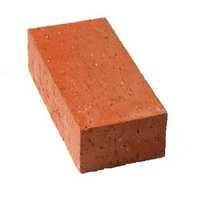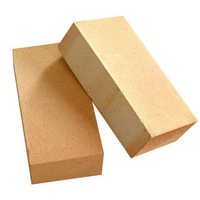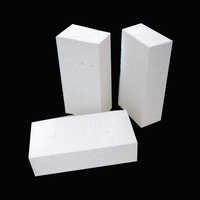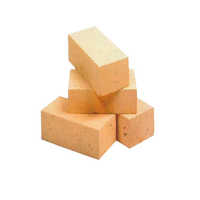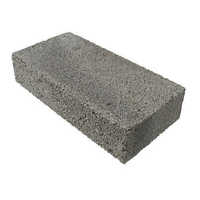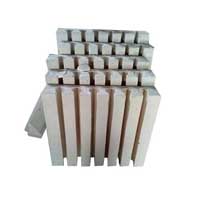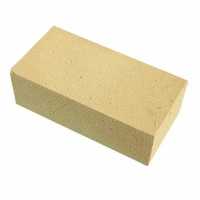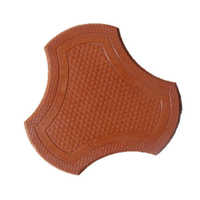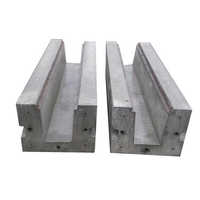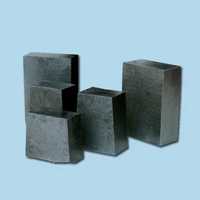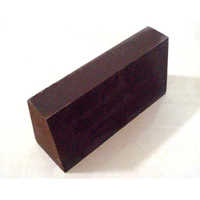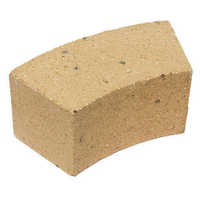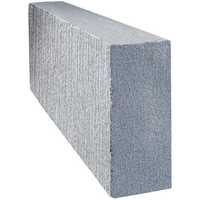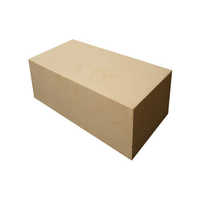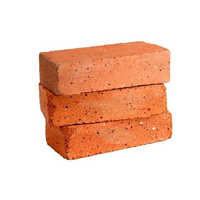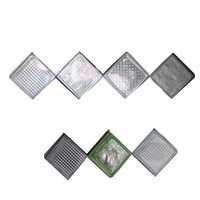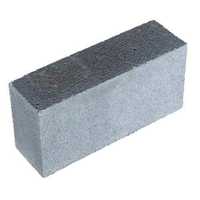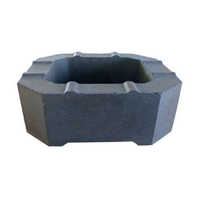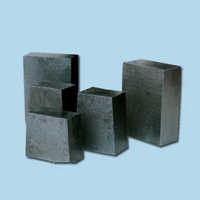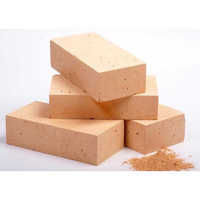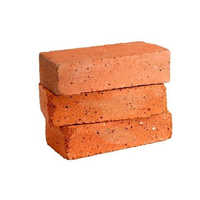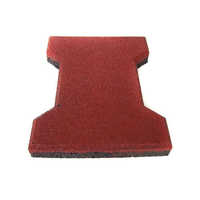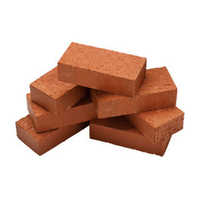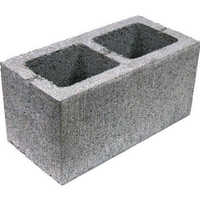Bricks
(18369 products)
Related Categories
AAC Blocks
Aluminum Composite Panels
Architectural Hardware
Bathroom & Toilet Accessories/Fittings
Bricks
Bright Bars
Bucket Elevator
Builders & Construction Hardware
Building Facilities
Building & Construction Material & Supplies
Building Ceramic
Building Coating
Building Glass
Building Metallic Materials
Building Plastic
Bus Shelter
Cement & Sand
Chimney
Clean Room Equipment
Commercial & Residential Land
Commercial Property
Construction Chemicals
Construction Equipment
Construction Materials Stocks
Decorative Laminates
Doorbell
Doors/Windows Accessories & Fittings
Doors/Wooden Door Panels
Elevators, Lifts & Escalators
Fabricators
Fire Bricks
Fireproof/Flameproof Materials
Floor Tiles
Flooring
Fountains
Furniture Fittings & Fixtures
Gates & Grills
Glass & Glass Products
Granite
Heat Insulation
Hooks & Mounts
Industrial Property
Lime & Lime Products
Locks
Manhole Covers
Marble
Modular Toilet
Nozzles
PVC Doors
PVC Products
Paint & Allied Products
Paint Brushes
Painting Equipments & Maintenance
Plywood
Portable Cabins
Prefabricated & Portable Buildings
Property For Lease
Property For Rent
Real Estate Agents
Residential Property
Roof Tiles
Roofing Systems
Sandstone
Sanitaryware
Scaffolding
Sheet Metal
Slate Stone
Slotted Angles
Sluice Gate
Soundproofing Materials
Stone
Texture Paint
Tiles
Timber, Timber Products & Plank
Undertaking Contracted Projects
Vinyl Flooring
Wall Materials
Wall Tiles
Wallpaper
Water Tanks
Waterproof Materials
Waterproofing Chemicals
Top BricksCategories
Explore More Categories
High Alumina Bricks
Price: 55.00 - 120.00 INR (Approx.)/Ton
MOQ - 20 Ton/Tons
Material - Alumina Block
15 Years
Business Type: Manufacturer | Distributor
SRINATH ENTERPRISES
Phosphate Bonded Refractory Bricks Porosity: Ceramic
Price: 60000.00 INR (Approx.)/Ton
MOQ - 1 Ton/Tons
Types of Refractories - Basic Refractory
Bricks Type - High Alumina Bricks
Shape - Powder
9 Years
Business Type: Manufacturer | Supplier
Universal Refactories & Allied Construction Co.
High Strength Square Fly Ash Brick
Price: 25 INR (Approx.)/Piece
MOQ - 100 Piece/Pieces
Bricks Type - Fly-Ash Bricks
Size - 8 x 8 x 4 Inch
Shape - Square
2 Years
Business Type: Manufacturer | Distributor
MANGILAL VIJAYVARGIYA AND SONS
Tile Press Machine
Price: 275000 INR (Approx.)/, Set
MOQ - 1 , Set/Sets
16 Years
Business Type: Manufacturer | Exporter
REVA ENGINEERING ENTERPRISES
Ball Mill Lining Bricks
Price: 100 INR (Approx.)/Container
MOQ - 100 Container/Containers
10 Years
Business Type: Manufacturer | Exporter
JYOTI INNOVISION PVT. LTD.
Zig- Zag paver block
Price: 42 INR (Approx.)/Piece
MOQ - 1000 Piece/Pieces
13 Years
Business Type: Manufacturer | Distributor
MOHTA CEMENT PVT LTD
Indian Inquiries Only
Transparent Escalator Cabin Toughened Glass
Price: 70 INR (Approx.)/Square Foot
MOQ - 50 Square Foot/Square Foots
Usage - Domestic, Commercial & Industrial
Structure - Solid
Color - Transparent
2 Years
Business Type: Manufacturer | Distributor
SHIVSAI TECHNOLOGIES
Rectangle Element Hanger Bricks
Price: 100 INR (Approx.)/Piece
MOQ - 100 Piece/Pieces
Size - Different Size
Shape - Rectangle
3 Years
Business Type: Supplier | Trading Company
ESS ESS CERATECH
Indian Inquiries Only
Acid Alkali Resistant Tiles
Price: 25 INR (Approx.)/Piece
MOQ - 10000 Piece/Pieces
15 Years
Business Type: Manufacturer | Exporter
STEULER INDUSTRIAL SOLUTION (INDIA) PRIVATE LIMITED
Aerocon Labour Quarters, Material: Sandwich panel
5 Years
Business Type: Manufacturer | Trading Company
INNBOX MODULAR PREFAB
Brown Acid Proof Clay Bricks
Price: 44 INR (Approx.)/Unit
MOQ - 100 Unit/Units
Bricks Type - Other, Clay Bricks
Material - Clay, Other
Color - Brown
Business Type: Manufacturer | Supplier
ZEOCHEM ANTICORR
Verified Exporter
( Accepts only Foreign Inquiry)
Solid Square Interlocking Bricks
Price: 10.00 INR (Approx.)/Piece
MOQ - 10000 Piece/Pieces
Bricks Type - Other, Interlocking Bricks
Shape - Square
Porosity - Solid
8 Years
Business Type: Manufacturer | Distributor
BHARAT CHEMICALS INDUSTRIES
Indian Inquiries Only
Grey V-Lite Blocks
Price: 4700 INR (Approx.)/Cubic Meter
MOQ - 20 Cubic Meter/Cubic Meters
Compressive Strength - 4 Megapascals (MPa )
Dry Density Grade - 600
Color - Grey
2 Years
Business Type: Manufacturer | Distributor
NRV INFRA SOLUTIONS PVT LTD
High Strength Aac Plant
Price: 6000000 INR (Approx.)/Unit
MOQ - 1 Unit/Units
Working Life - Long Life Years
Size - Different available
Thickness - Different available Millimeter (mm)
2 Years
Business Type: Manufacturer
FORCE ENGINEERING
Gray 12X4X2 Inch Rcc Concrete Block
Price: 40 INR (Approx.)/Piece
MOQ - 1000 Piece/Pieces
Bricks Type - Concrete Bricks
Type - Engineering Bricks
Color - Gray
Business Type: Trading Company
Rudra Associate & Construction
Indian Inquiries Only
CLC Block Making Plant
Business Type: Manufacturer
MARUTI HYDRAULICS PRIVATE LIMITED
Indian Inquiries Only
Indian Inquiries Only
Reactable Cement CLC Brick
Price: 100.00 INR (Approx.)/Piece
MOQ - 100 Piece/Pieces
Bricks Type - Concrete Bricks
Type - Common Bricks
Shape - Rectangle
12 Years
Business Type: Manufacturer | Exporter
HEM CARE CORPORATION
Cement Bricks
Price: 4.6 INR (Approx.)/Piece
MOQ - 1500 Piece/Pieces
Bricks Type - Fly-Ash Bricks
11 Years
Business Type: Manufacturer
DRP INFRATECH
Indian Inquiries Only
Yellow Zig Zag Interlocking Bricks Porosity: Solid
Price: 15 INR (Approx.)/Piece
MOQ - 2000 Piece/Pieces
Bricks Type - Yellow Zig Zag Interlocking Bricks, Other
Type - Common Bricks
Color - Yellow
3 Years
Business Type: Manufacturer
RS CEMENT PIPE PRIVATE LIMITED
Indian Inquiries Only
Natural Slate Porosint Bricks
Price: 300 INR (Approx.)/Box
MOQ - 100 Box/Boxes
Material - Natural Slate
Shape - Rectangle
Porosity - Solid
12 Years
Business Type: Manufacturer | Distributor
ARORA FIREBRICKS PVT LTD
Black Magnesia Carbon Bricks
Price: 400 INR (Approx.)/Kilograms
MOQ - 100 Kilograms/Kilograms
Porosity (%) - 5-6%
Bricks Type - Other, Magnesia Carbon Bricks
Color - Black
3 Years
Business Type: Service Provider | Trading Company
C. K. ASSOCIATES
Indian Inquiries Only
Light Weight Fly Ash Bricks
Price: 4.5 INR (Approx.)/Piece
MOQ - 100 Piece/Pieces
Material - Natural Slate
Type - Common Bricks
Porosity - Solid
3 Years
Business Type: Manufacturer
KJS Concrete Private Limited
Indian Inquiries Only
Natural Slate Gray Concrete Brick
Price: 17 INR (Approx.)/Piece
MOQ - 2600 Piece/Pieces
Water Absorption - <15%
Dimension (L*W*H) - 190 x 190 x 90 Millimeter (mm)
Compressive Strength - +8.00 Newtons per Millimetre Squared (N/mm2)
3 Years
Business Type: Manufacturer | Supplier
HARDEN BRICKS PVT. LTD.
Indian Inquiries Only
Bricks Manufacturers | Suppliers in India
| Company Name | Location | Member Since |
|---|---|---|
| Reva Engineering Enterprises | Ghaziabad, India | 16 Years |
| Srinath Enterprises | Bhilwara, India | 15 Years |
| Steuler Industrial Solution (India) Private Limited | Ankleshwar, India | 15 Years |
| Mohta Cement Pvt Ltd | Indore, India | 13 Years |
| Shree Balaji Agro Plast | Satara, India | 13 Years |
| Hem Care Corporation | Rajkot, India | 12 Years |
| Arora Firebricks Pvt Ltd | Bengaluru, India | 12 Years |
| Dynamic Constructions (Ss) Co Ltd. | Juba, South Sudan | 11 Years |
| Trilok Precast Private Limited | Surat, India | 11 Years |
| Drp Infratech | Mhow, India | 11 Years |
All You Need to Know about Bricks
Many different materials go into making modern bricks, each contributing to the material's inherent strengths, weight, density, and versatility. Color, texture, weather resistance, maximum allowable size, and depth are only some of the variables that may be altered by varying the composition and additives used in engineering and construction.
When you look at a brick structure, what you're seeing are thousands of these crucial implements, each carefully balanced and sized to guarantee an appropriate distribution of force and keep a roof above people's heads.
Both engineering and cladding can be accomplished using bricks. In general, engineering is used for construction. The criteria for these bricks are more stringent since they are responsible for preventing the collapse of walls. Because they will be installed on the exterior of a building, facing bricks are designed with aesthetic factors like texture and color at the forefront.
1. Removal of Top Soil
Loose soil up to a depth of about 200 mm is what's meant by "topsoil," and it's these materials that need to be removed. These components are unnecessary for the production of bricks and should be eliminated since they contain several contaminants.
2. Digging and Spreading
Soil is due to a depth of 200 mm, then dispersed evenly throughout the area; clay is piled in mounds 600a 1200 mm high.
3. Cleaning
Soil should be swept free of rocks, plants, pebbles, and other debris after being spread on the ground. The clay needs to be washed and screened if there are too many impurities. Costs will rise and the procedure will become cumbersome. Soil lumps should be ground into a fine powder.
4. Weathering
Finally, the soil is left exposed to the air for some time (usually a few weeks, but this can vary depending on the soil type) to soften, which increases the soil's pliability and durability.
5. Blending
Soil quality can be improved by incorporating various materials, such as coal ash, sand, calcareous clays, and water, in the right proportions.
6. Tempering
Soil is kneaded beneath the feet of men or animals after a sufficient amount of water has been added to make it firm and uniform. Typically, around 25-30% water is used to make soft plastic clay for use in making handmade bricks. The dirt is softened in a pug mill to make high-quality bricks on a massive scale (about 20,000).
7. Ground Moulding
Bricks are ground molded thata s why the brick price in India is continually increasing when the procedure is done by hand using human labor. A moldera s daily output averages around 750 bricks.
While the nominal dimensions are 20 by 10 by 10, this measurement does not take into account the thickness of the mortar, hence the true dimensions of a modular brick are 19 by 9 by 9.
8. Natural Drying
Molded bricks are laid in rows on their edges, elevated slightly off the ground, a technique known as hack drying. These bricks have been dried in the air and sun and are sturdy enough to build with.
9. Artificial Drying
This method of artificial drying is used when drying bricks on a big scale is required.
10. Clamp or Open Kiln
Advantages of this temporary construction include a low-price tag up front, lower operating expenses, and the fact that just a small number of qualified workers are needed to get the job done.
11. Intermittent Kiln
Intermittent or continuous kilns are chosen when an abundance of high-quality bricks must be produced. When using these kilns, the burning process is interrupted at intervals.
12. Continuous Kilns
Bull's Trench Kilns, tunnel Kilns, and Hoffman's Kilns are the three types of kilns used in this operation, and all of them burn continuously.
Types of Bricks
1. Hollow Bricks
These lightweight bricks, known as cellular or cavity bricks due to their hollow interior, are hollow to the tune of around a third of the weight of regular bricks. Since these bricks may be laid in a fraction of the time it takes to lay regular bricks, they are frequently utilized for expedited building projects.
2. Fire Bricks
The refractory bricks are another name for them. Produced by an innovative earthing technique. After being burnt, it retains the ability to tolerate very high temperatures. All of this is accomplished with no sacrifice of will, size, or strength. This makes them a popular choice for use as a building material throughout rural and arid parts of India.
3. Jhama Blocks
Overburnt bricks or vitrified brick better describe the Jhama Brick, which is fired at a higher temperature and for a longer period than regular bricks. The strength is much greater or equal to that of a first-class brick, and the shape is distorted but has a higher absorption capacity.
4. Engineering Bricks
Engineering bricks are popular due to their durability, frost resistance, and fireproof qualities. Most common at lower levels when more protection from moisture and chemicals is desired. They're also distinguished by a lack of porosity.
5. Porotherm Smart Bricks
It is often known as the "eco brick," which is a resourceful approach to making bricks out of natural clay. You may have these perforated bricks in a horizontal or vertical orientation. What you mean when you say "perforated" is "to pierce and form a hole or holes in."
6. Concrete Bricks
Produced with a concrete mix of cement, sand, and water. They are versatile enough to be made into bricks of varying shapes and sizes. One advantage of using concrete bricks instead of clay ones is that they can be easily mass-produced right on the job site.
7. Sand lime or calcium silicate Bricks
Often referred to as "sand-lime bricks," these are constructed from sand and lime. One of the most common brick kinds in India, these bricks have several applications in the building industry. A chemical setting is used to complete the process of making these bricks, which implies that heat and pressure are applied to speed up the chemical reaction.
8. Sun-dried bricks
Unfired bricks, often known as sundried bricks, are the earliest and most fundamental type of brick. The manufacturing method for these bricks is implicit in the name. Used in rural locations or for temporary buildings, sun-dried wood is hardened without being burned.
9. Fly ash bricks
It is a byproduct of burning coal with water at a high temperature (about a thousand degrees Celsius) and includes either class C or class F fly ash, making it ideal for use in brickwork. Class C fly ash is superior to other bricks for usage in building pillars, foundations, and walls due to its high calcium oxide content.
How To Select The Perfect Building Bricks
1. Colorize
When choosing a construction brick, consider its color first. The color of the brick has a big influence on the finished project's aesthetic.
2. Brick Types
Bricks are a fundamental building material that is rectangular and made from clay. Different varieties of bricks are used in the building based on their basic materials, such as concrete, lime, and fly ash.
3. Measurements
Brick size is another essential consideration. The size of the bricks affects several aspects of a project, including the building's design, aesthetics, and convenience of laying.
4. Texture
Brick texture options are as varied as color. Smooth, light, heavy, tumbled, and stock bricks are available today. It's important to match the texture and color of existing brickwork. The texture of the bricks affects how light reflects off its surface, light and shade effects, and the faA ade's perceived color.
5. Mortar Color
Mortar color is another key building feature. Depending on the bond pattern, mortar makes up 15% to 17% of visible brickwork. Also, when repointing existing brickwork, make sure your mortar matches the surrounding built environment.
6. Bond Patterns
Brick patterns are another important factor. Bonding ensures a wall's strength and stability, but it can also improve its aesthetic. When choosing bricks, keep the pattern in mind.
7. Orientation
The bricks' orientation will affect the project's appearance. Bricks arranged in intriguing patterns give value to a wall.
8. Special-shapedped bricks
Special-shaped bricks can minimize build labor and waste on-site by decreasing the need to cut bricks by hand. They can also improve the aesthetics and longevity of brickwork.
9. Other Materials
Bricks can't be used for everything, right? Construction projects employ glass, wood, etc. Brick compliments other materials effectively. When choosing brick, examine what other materials you'll be using to guarantee they work well together and enhance the overall design of your project.
FAQs: Bricks
Q: What is the cost of 1 brick?
Ans: The price of clay brick has gone up from Rs 6a Rs 7 to Rs 11a Rs 12.1.
Q: What are bricks made of?
Ans: Bricks are manufactured from clay or shale by molding the material, drying it, and then firing it. The variances are met with a long-lasting ceramic item.
Q: Which type of brick is best?
Ans: Fly ash bricks are superior to clay bricks in every way. Fly ash bricks are more durable than red bricks and better for the environment because ash is the main ingredient.
Q: What are the 3 types of bricks?
Ans: Facing bricks, engineering bricks, and ordinary bricks are the three most prevalent varieties.
Related Blog Topic:
Related Categories
Related Categories
AAC Blocks
Aluminum Composite Panels
Architectural Hardware
Bathroom & Toilet Accessories/Fittings
Bricks
Bright Bars
Bucket Elevator
Builders & Construction Hardware
Building Facilities
Building & Construction Material & Supplies
Building Ceramic
Building Coating
Building Glass
Building Metallic Materials
Building Plastic
Bus Shelter
Cement & Sand
Chimney
Clean Room Equipment
Commercial & Residential Land
Commercial Property
Construction Chemicals
Construction Equipment
Construction Materials Stocks
Decorative Laminates
Doorbell
Doors/Windows Accessories & Fittings
Doors/Wooden Door Panels
Elevators, Lifts & Escalators
Fabricators
Fire Bricks
Fireproof/Flameproof Materials
Floor Tiles
Flooring
Fountains
Furniture Fittings & Fixtures
Gates & Grills
Glass & Glass Products
Granite
Heat Insulation
Hooks & Mounts
Industrial Property
Lime & Lime Products
Locks
Manhole Covers
Marble
Modular Toilet
Nozzles
PVC Doors
PVC Products
Paint & Allied Products
Paint Brushes
Painting Equipments & Maintenance
Plywood
Portable Cabins
Prefabricated & Portable Buildings
Property For Lease
Property For Rent
Real Estate Agents
Residential Property
Roof Tiles
Roofing Systems
Sandstone
Sanitaryware
Scaffolding
Sheet Metal
Slate Stone
Slotted Angles
Sluice Gate
Soundproofing Materials
Stone
Texture Paint
Tiles
Timber, Timber Products & Plank
Undertaking Contracted Projects
Vinyl Flooring
Wall Materials
Wall Tiles
Wallpaper
Water Tanks
Waterproof Materials
Waterproofing Chemicals
